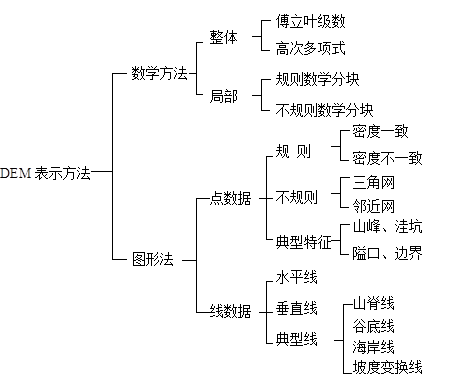General Introduction
The Digital Terrain Model (DTM) was originally proposed for the automatic design of highways (Miller, 1956). Since then, it has been used in the design of various line selection lines (railroads, highways, power lines) and the calculation of area, volume, and slope of various projects, and the judgment of any two points and the drawing of arbitrary sections. It is used to draw contour lines, slope slope maps, and stereo perspectives in surveying, and to make orthophoto maps and map repairs. It can be used as auxiliary data for classification in remote sensing applications. It is also the basic data of GIS, which can be used for the analysis of land use status, reasonable planning and flood risk forecasting. It can be used for navigation and missile guidance, combat electronic sandbox, etc. Research on DTM includes DTM accuracy issues, terrain classification, data acquisition, DTM gross error detection, quality control, data compression, DTM applications, and the establishment and application of irregular triangulation DTM.
DTM and DEM
From a mathematical point of view, the elevation model is a continuous function of the elevation Z with respect to the two independent variables of the plane coordinates X, Y. The digital elevation model (DEM) is only a finite discrete representation of it. The most common expression of an elevation model is the altitude relative to sea level, or the relative height of a reference plane, so the elevation model is also called the terrain model. In fact, the terrain model contains not only elevation attributes, but also other surface form attributes such as slope and aspect.
Digital terrain model is a digital expression of topographic surface morphological attribute information, and a digital description with spatial location and topographic attribute characteristics. Digital Elevation Model (DEM) is called when the terrain attribute in digital terrain model is elevation. Elevation is the third dimensional coordinate in geographic space. Since the data structure of traditional geographic information systems is two-dimensional, the establishment of digital elevation models is a necessary complement. DEM usually uses the elevation matrix formed by the surface rule grid unit, the generalized DEM also includes all the digital representations of the ground elevation, such as contour lines and triangulation. In GIS, DEM is the basic data for establishing DTM, other terrain elements can be directly or indirectly derived from DEM, called “derived data”, such as slope and aspect.
DEM representation
The change of surface elevation in a region can be expressed in a variety of ways, mathematically defined surfaces or points, lines, and images can be used to represent DEM, as shown in Figure.
1) Mathematical methods
Mathematical method can be used to express the global fitting method, that is, according to all elevation points data in the region, Fourier series and high order polynomials can be used to fit the unified surface of ground elevation. Local fitting method can also be used to divide the complex surface into regular square areas or irregular areas with roughly equal area for block search, and to form elevation surface by fitting a limited number of points.
2) Graphic method
(2.1) Line mode
Contours are the most common form of terrain. Other topographical feature lines are also important sources of information for expressing ground elevations, such as ridgelines, valley lines, coastlines, and slope transition lines.
(2.2) point mode
Establishing DEM with discrete sampling data points is one of the commonly used methods for establishing DEM. Data sampling can be based on regular grids, which can be uniform or inconsistent in density, irregular sampling, such as irregular triangular network, adjacent network model, etc., or selective sampling to collect important feature points such as peaks, craters, passes and boundaries.

In geographic information system, the three main representation models of DEM are regular grid model, contour model and irregular triangular network model.